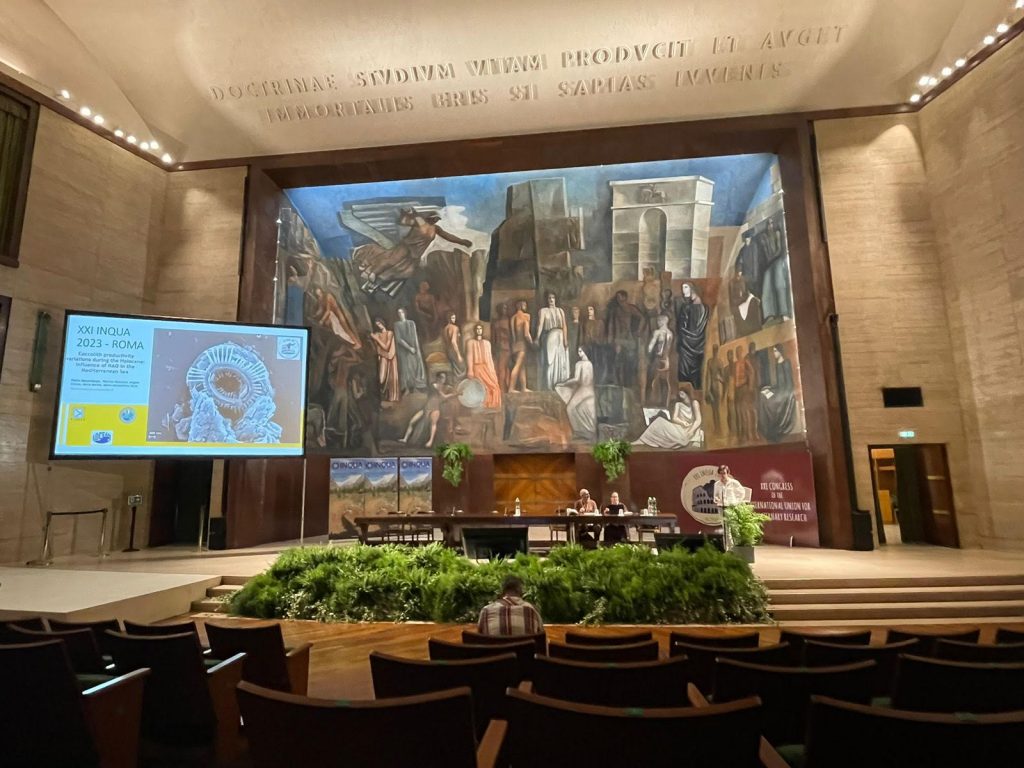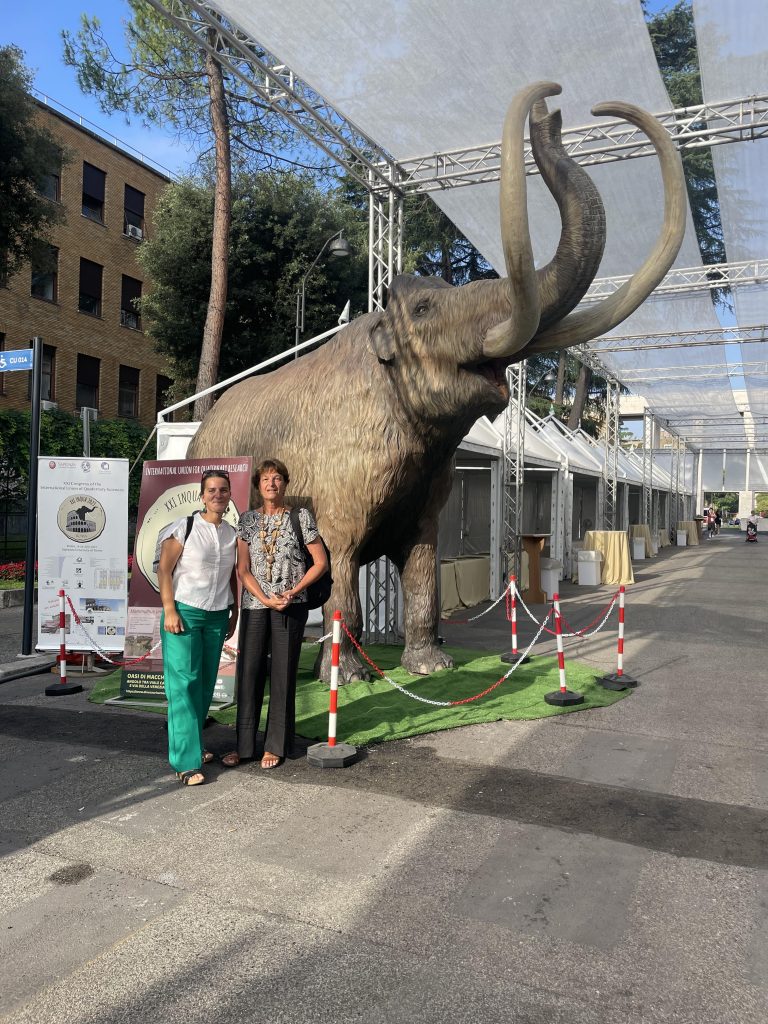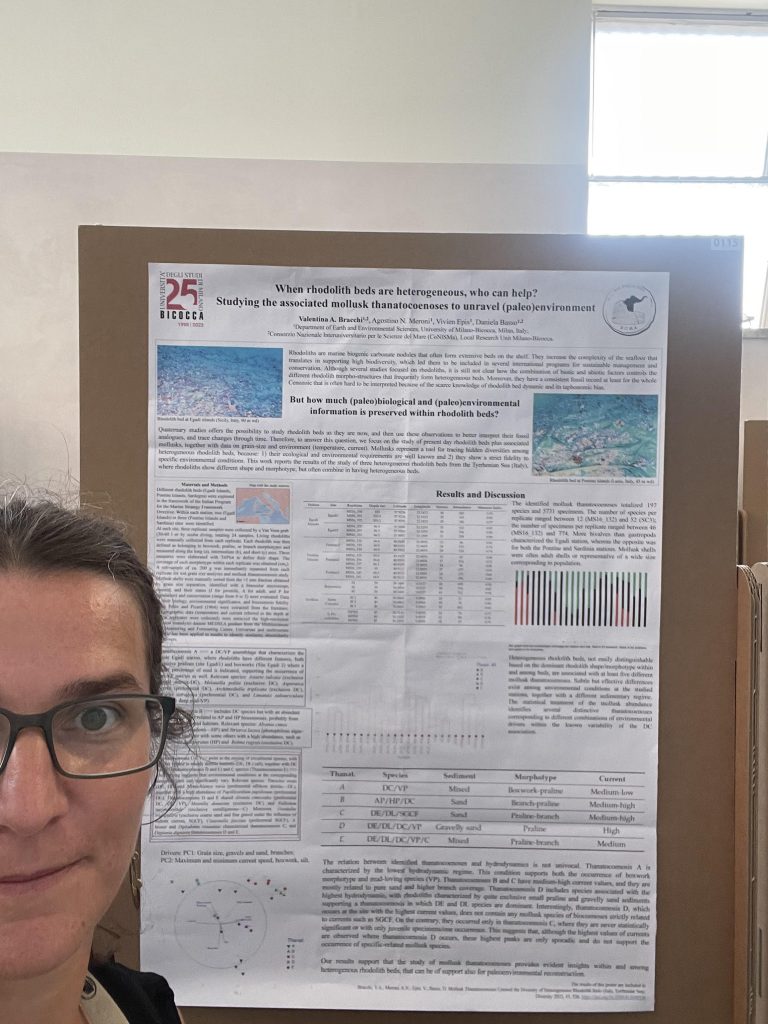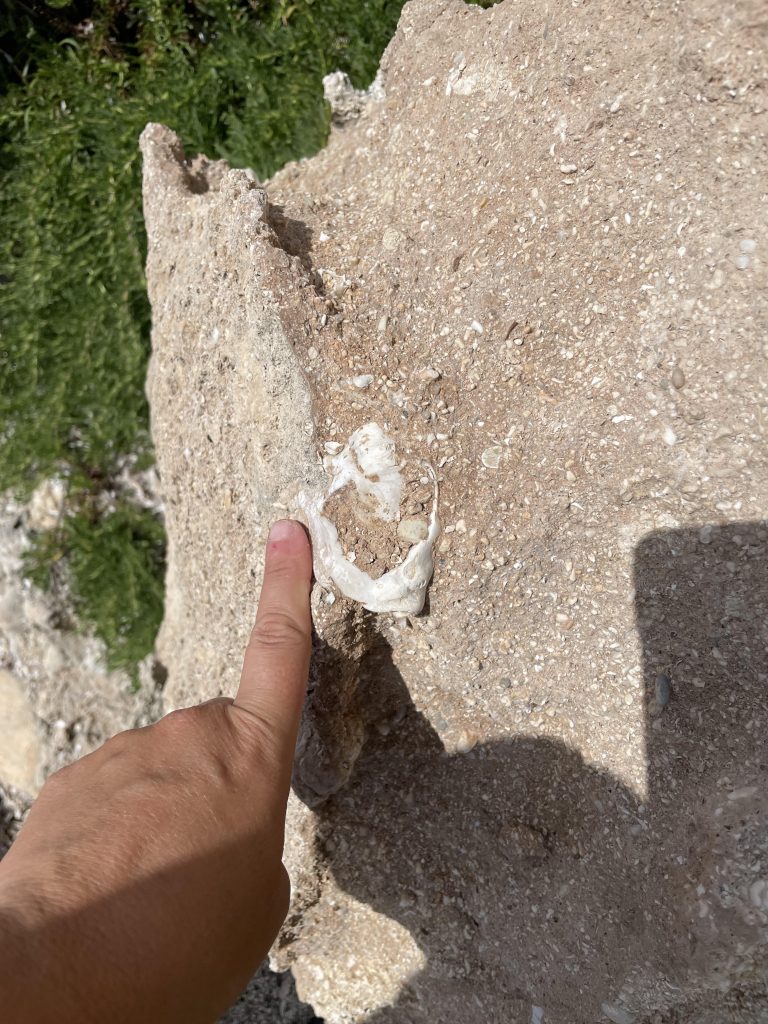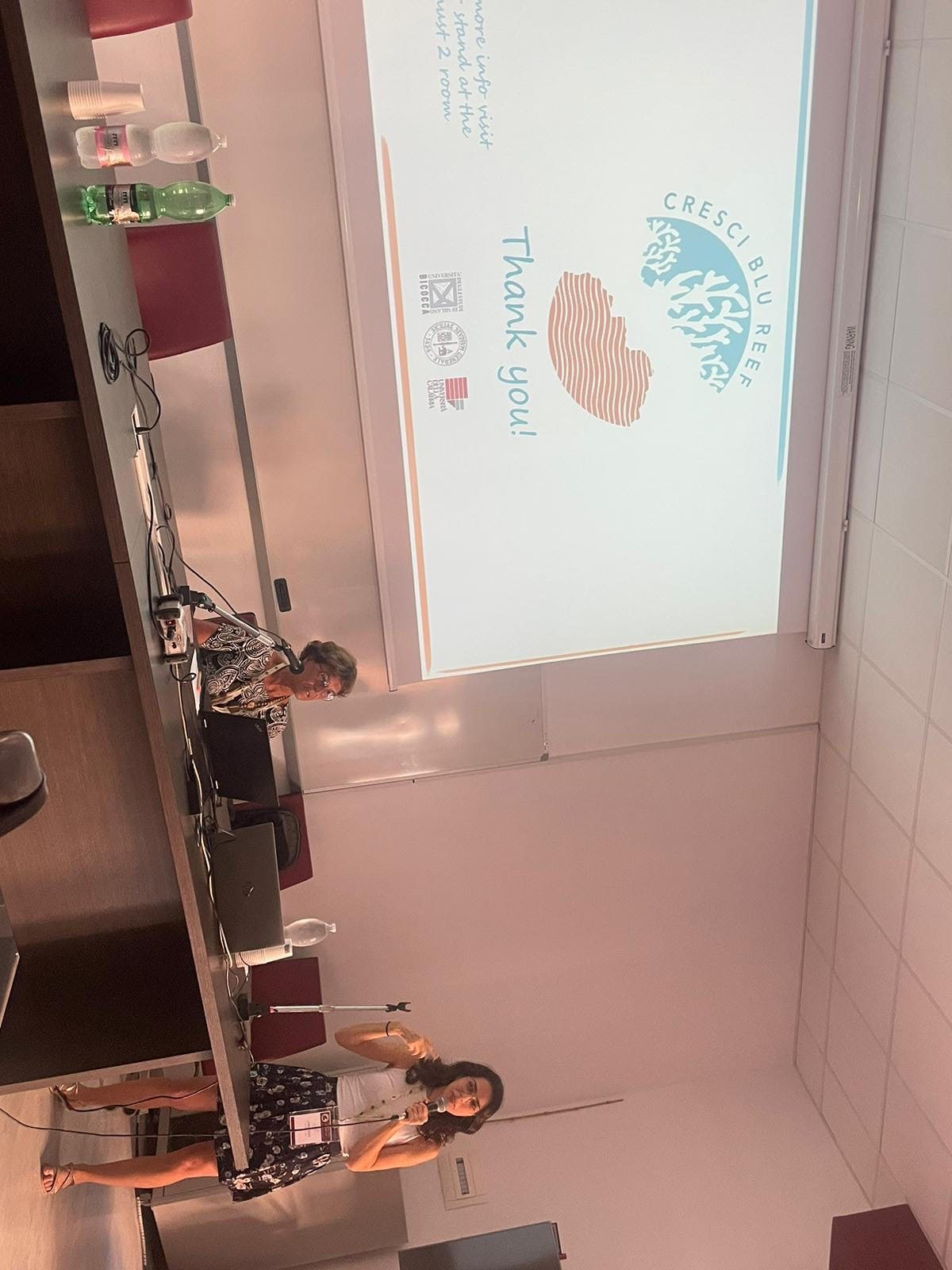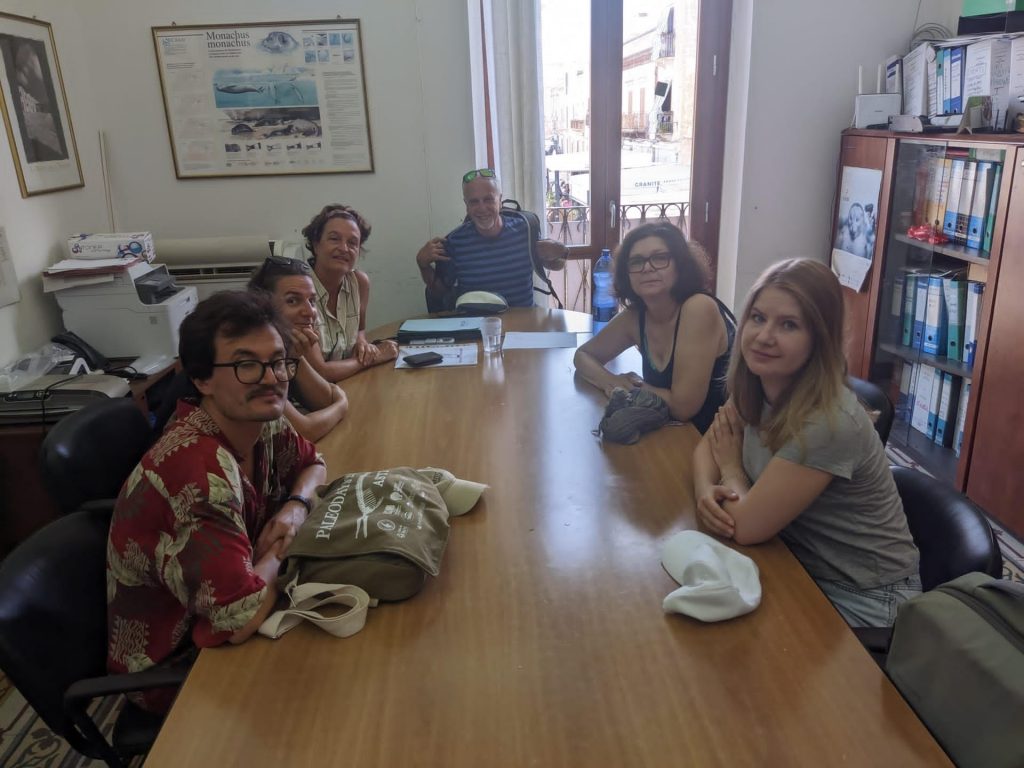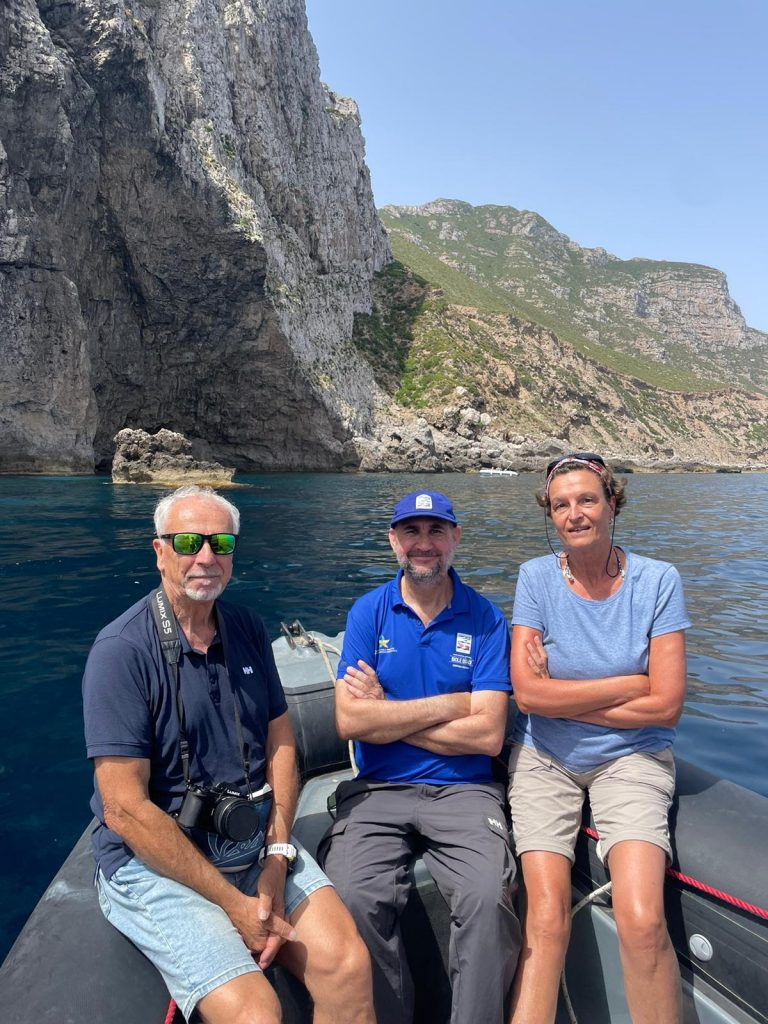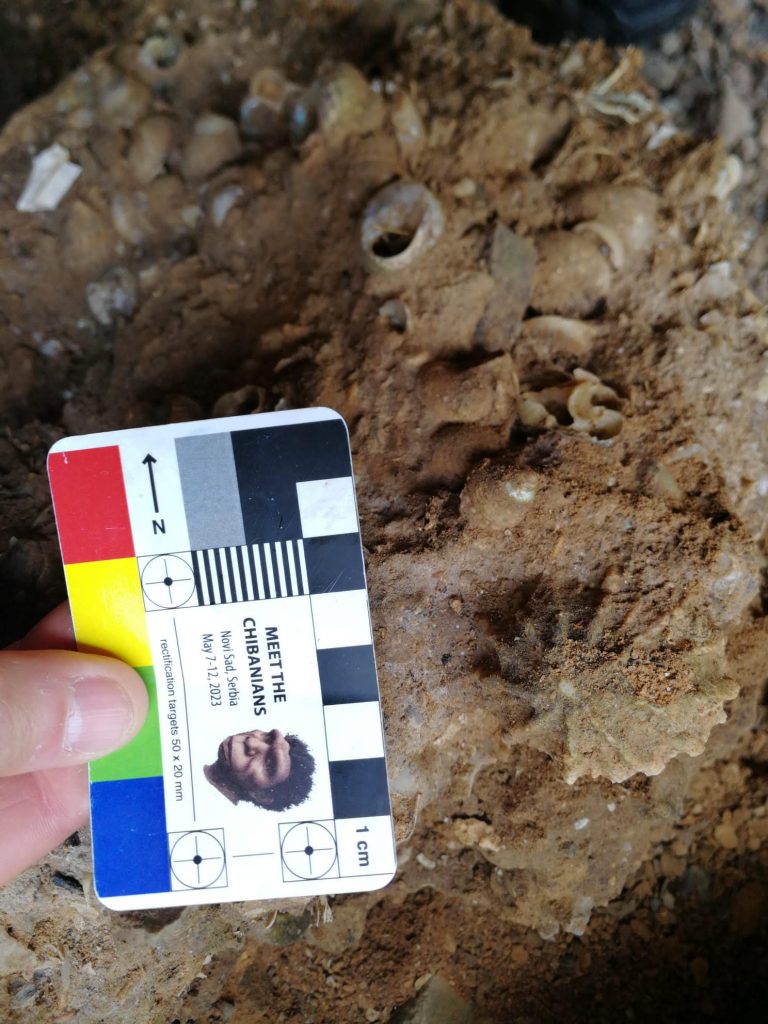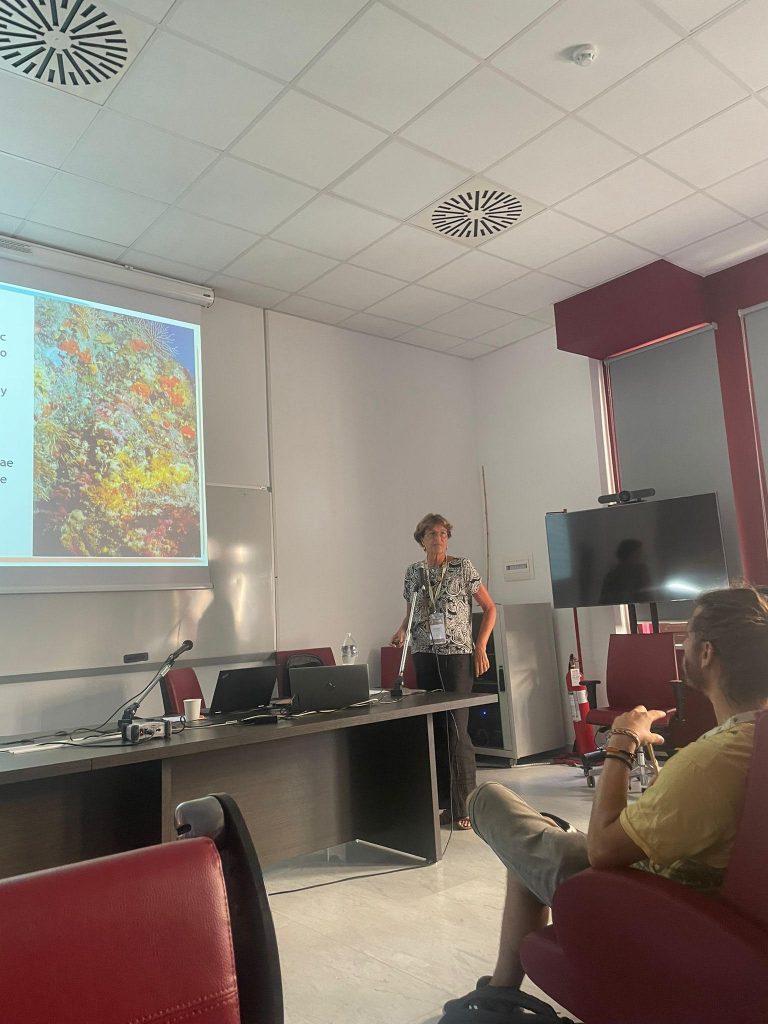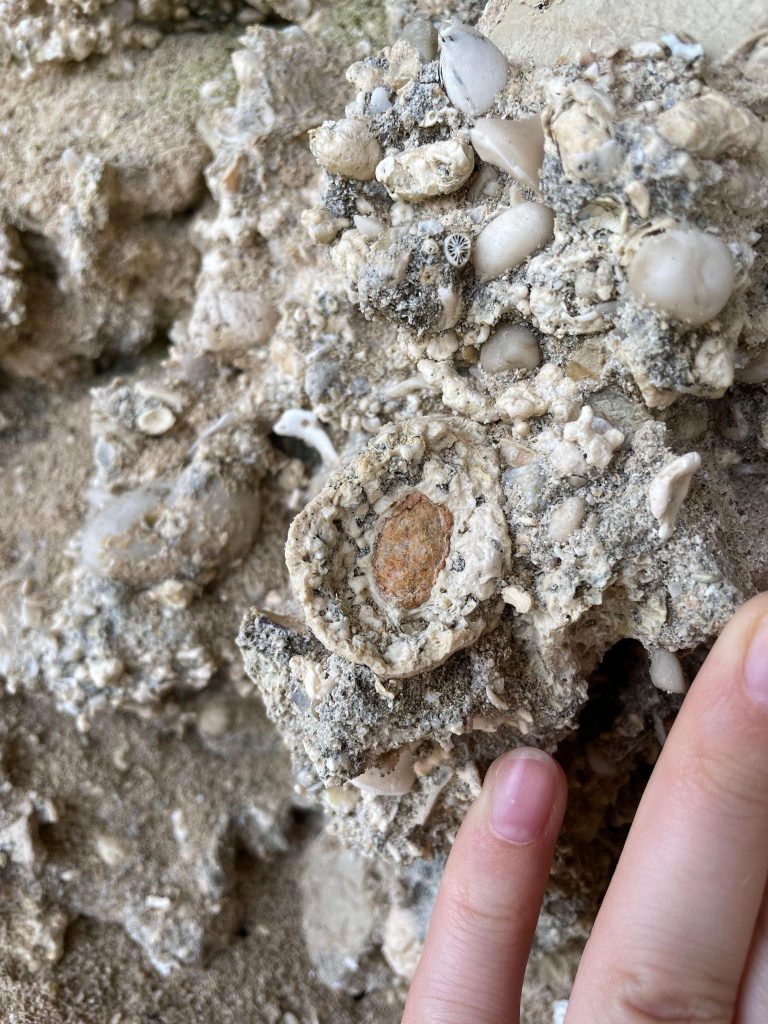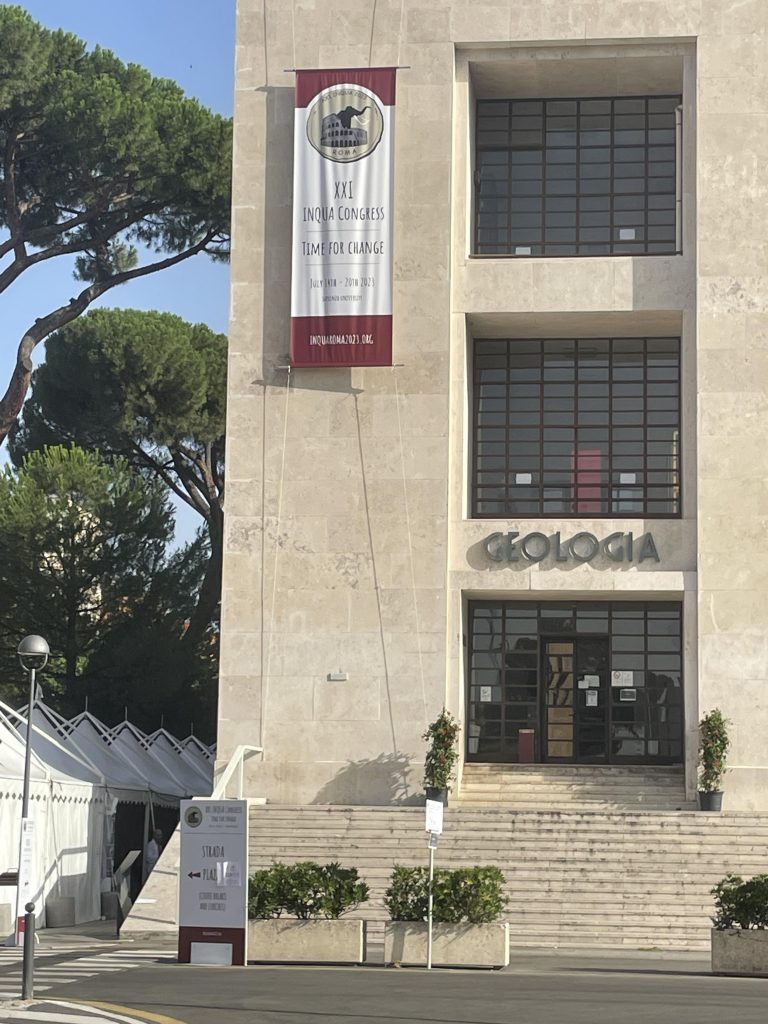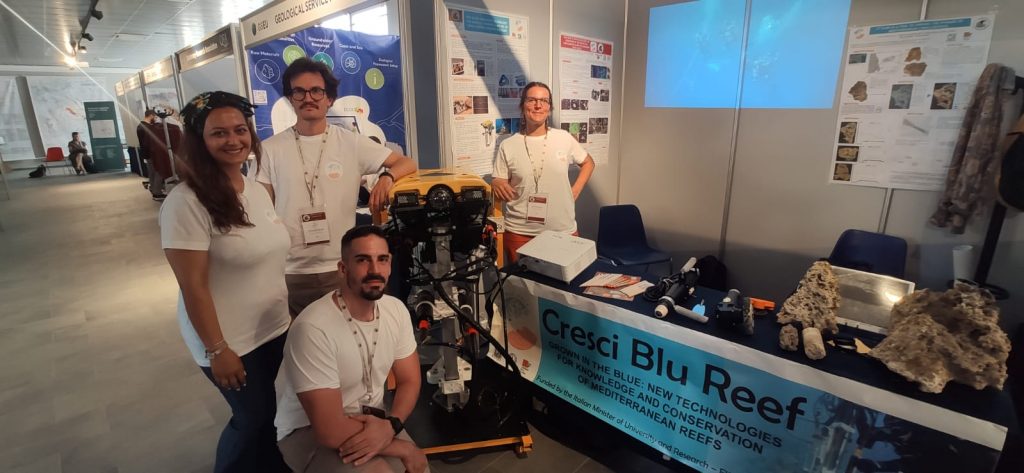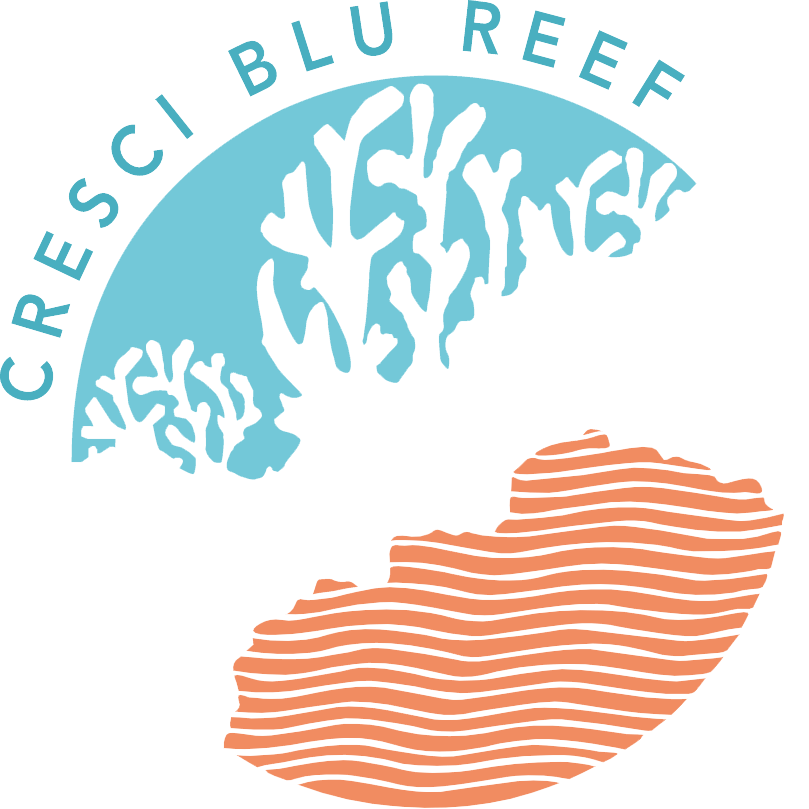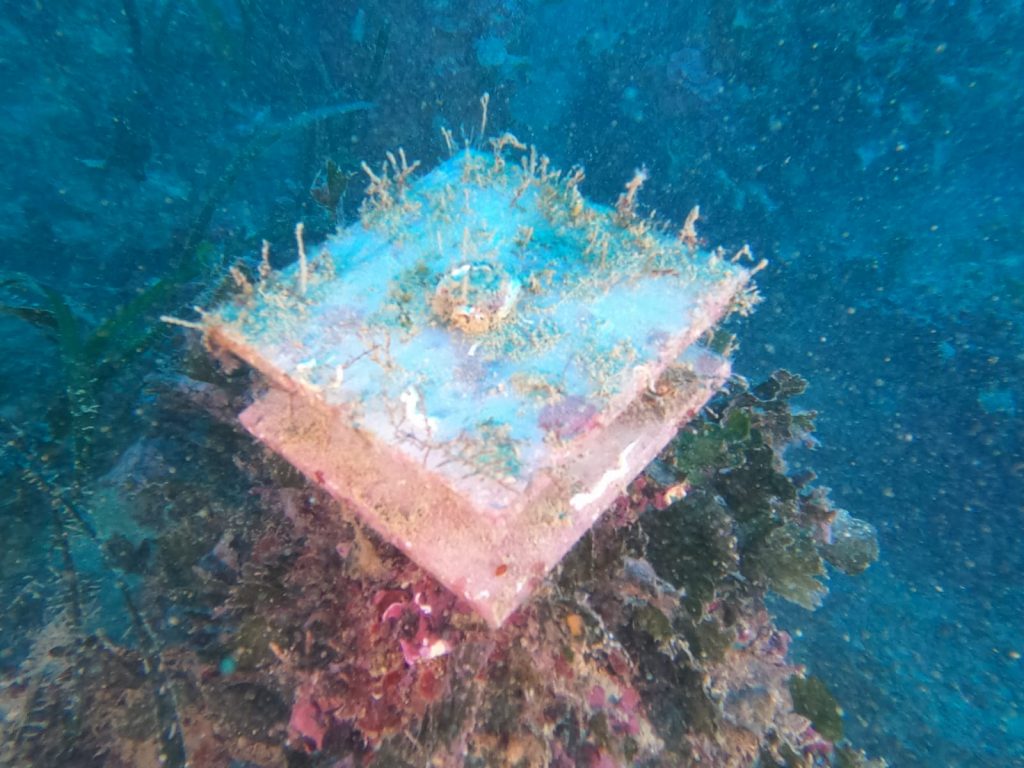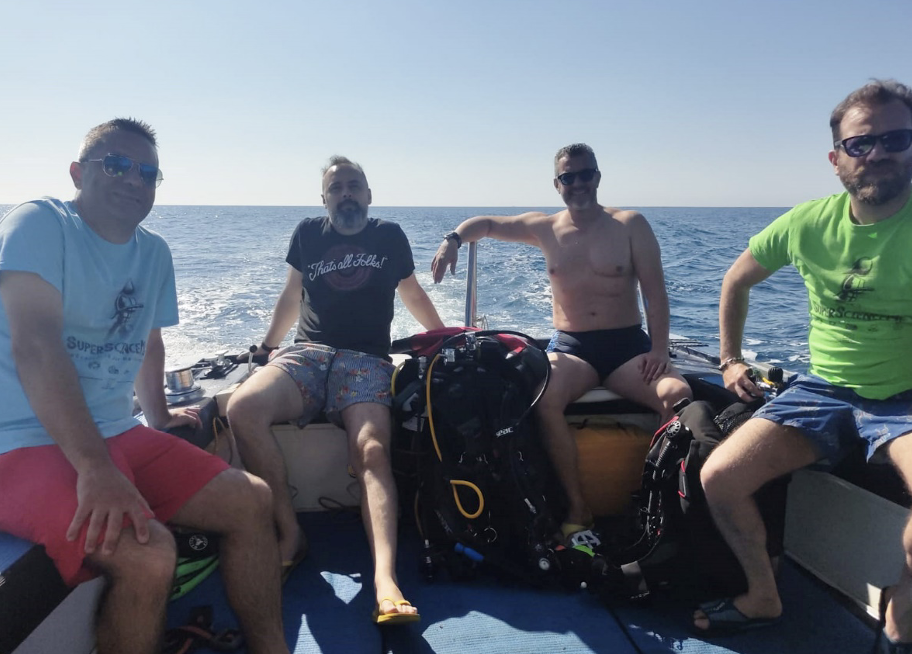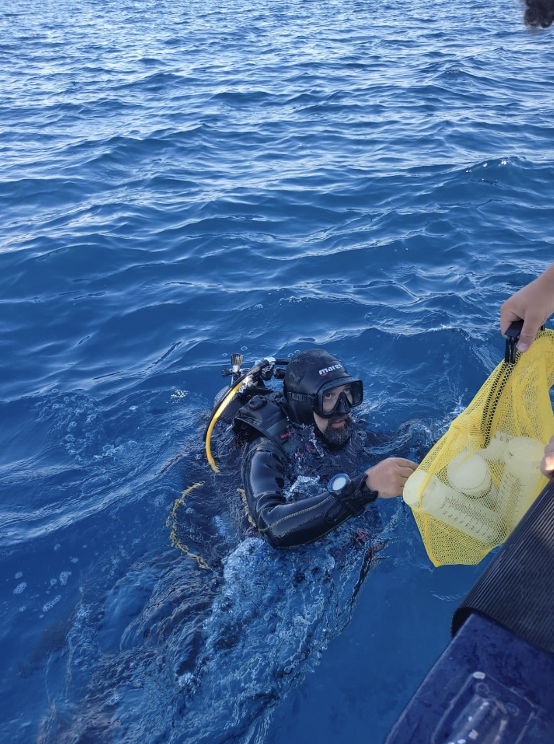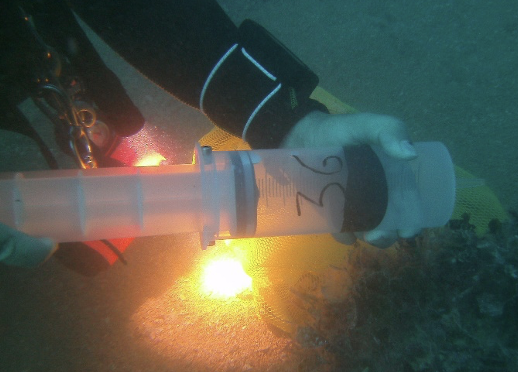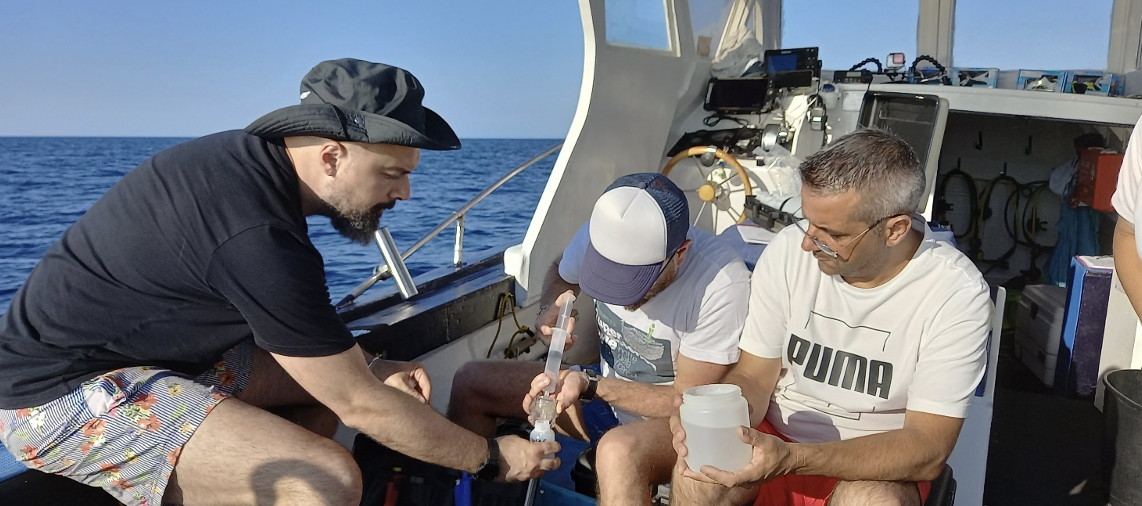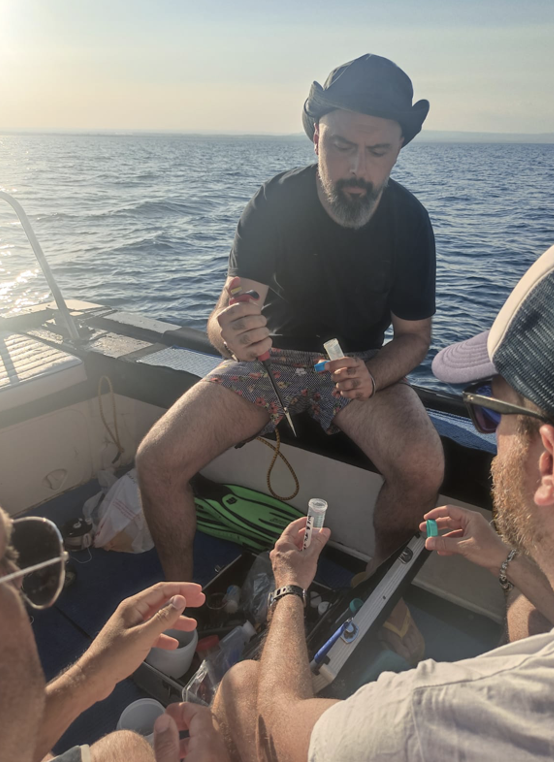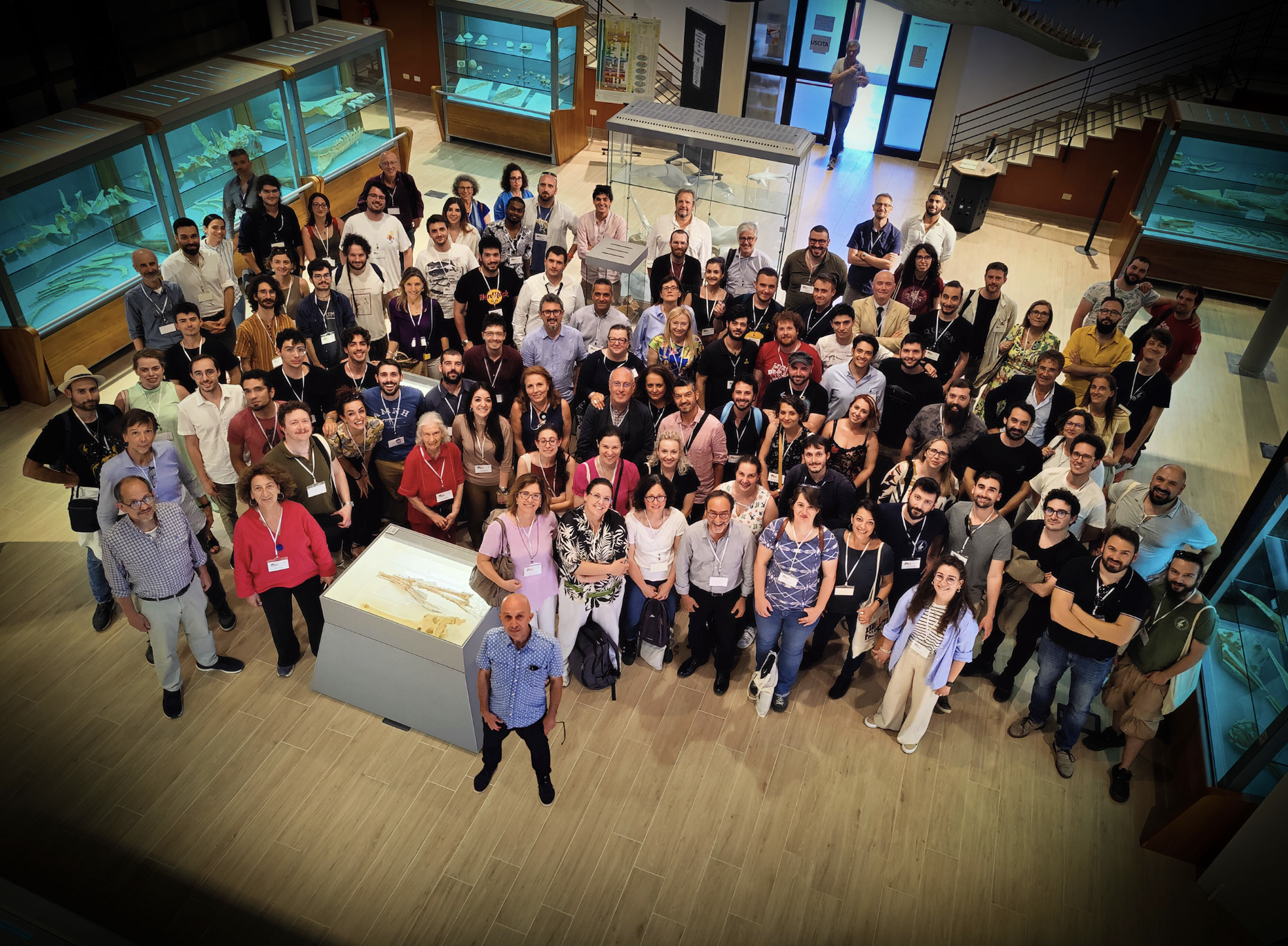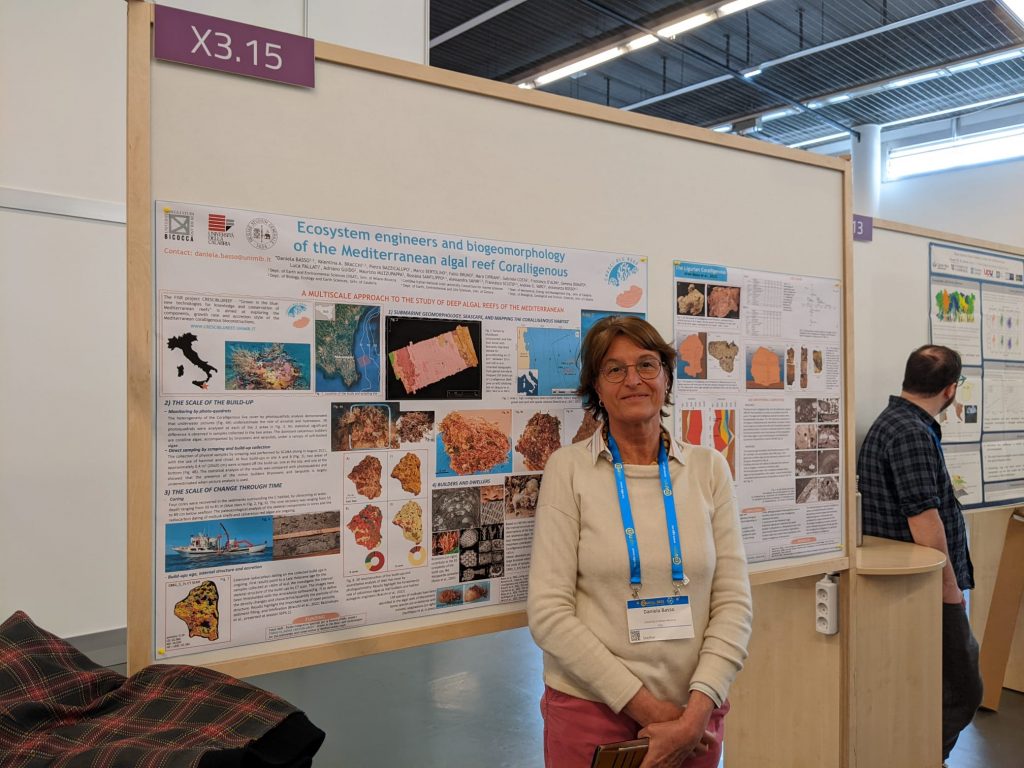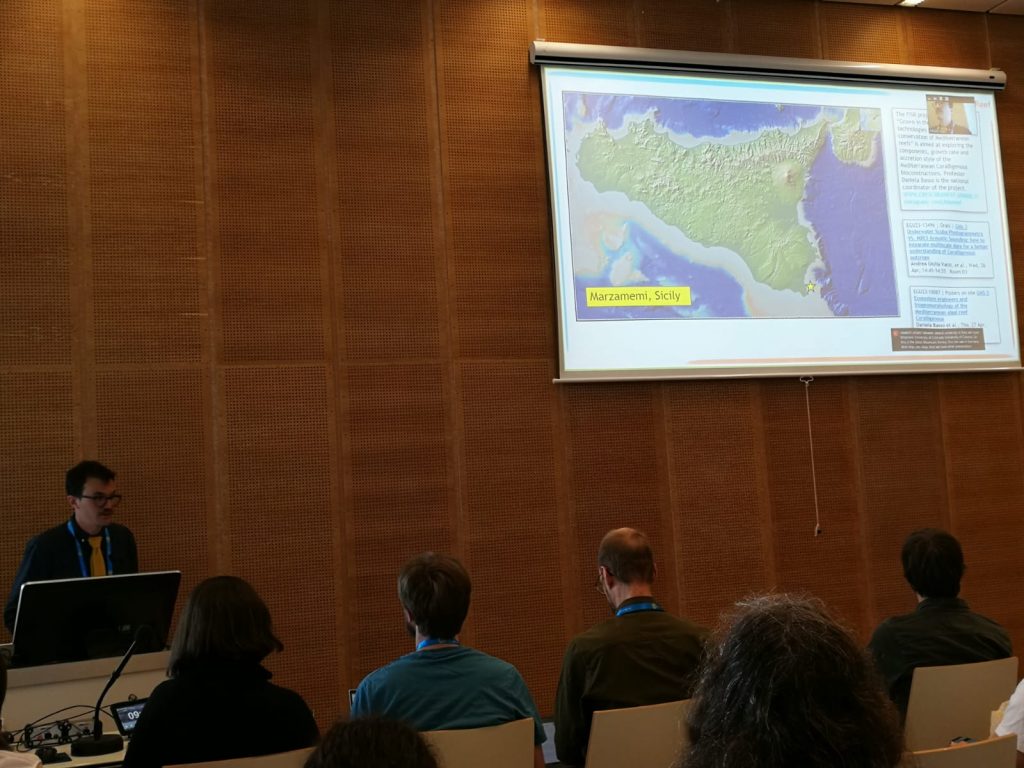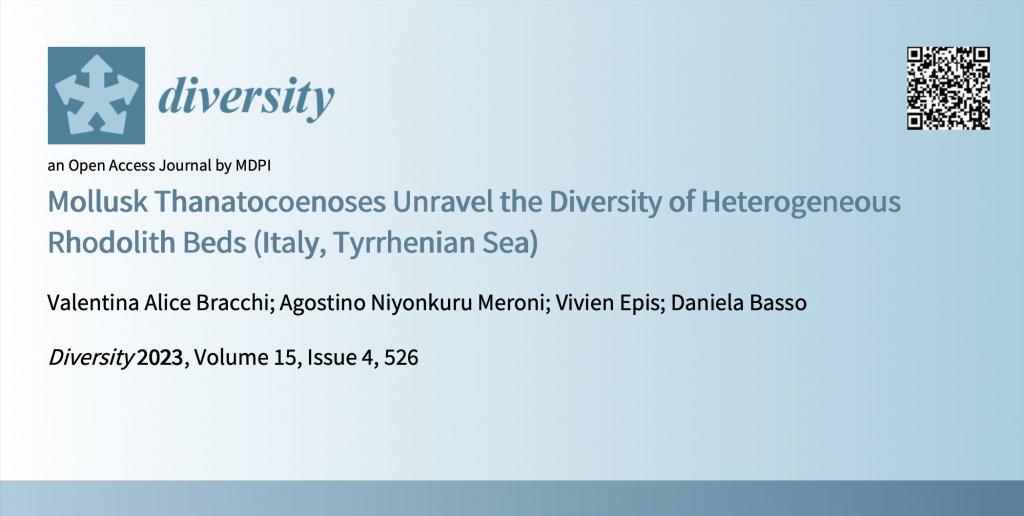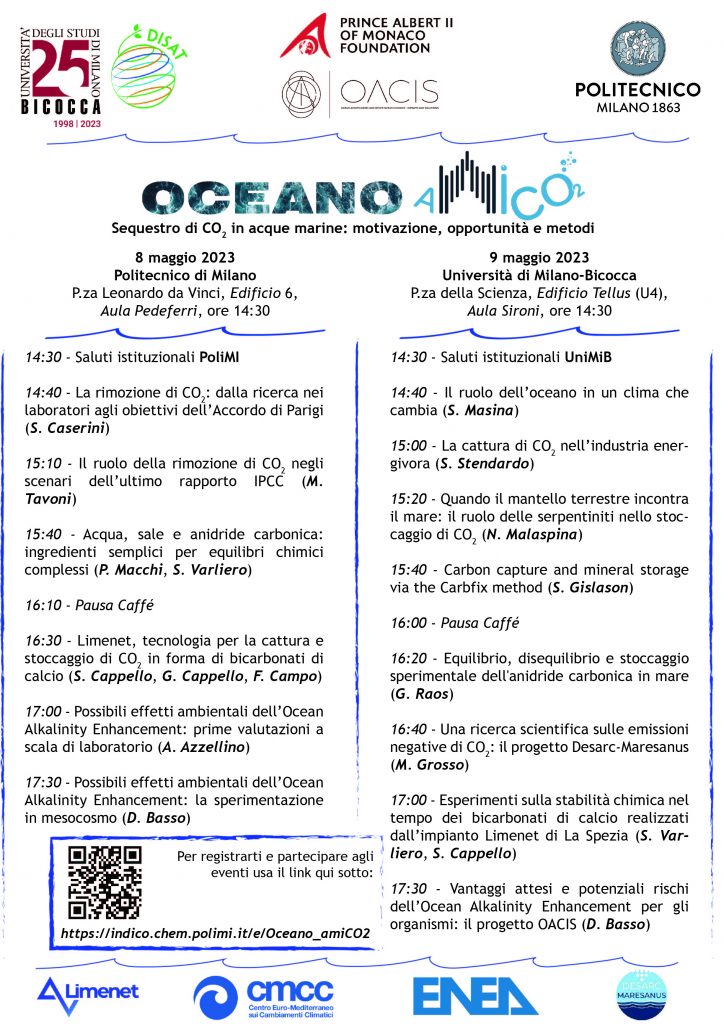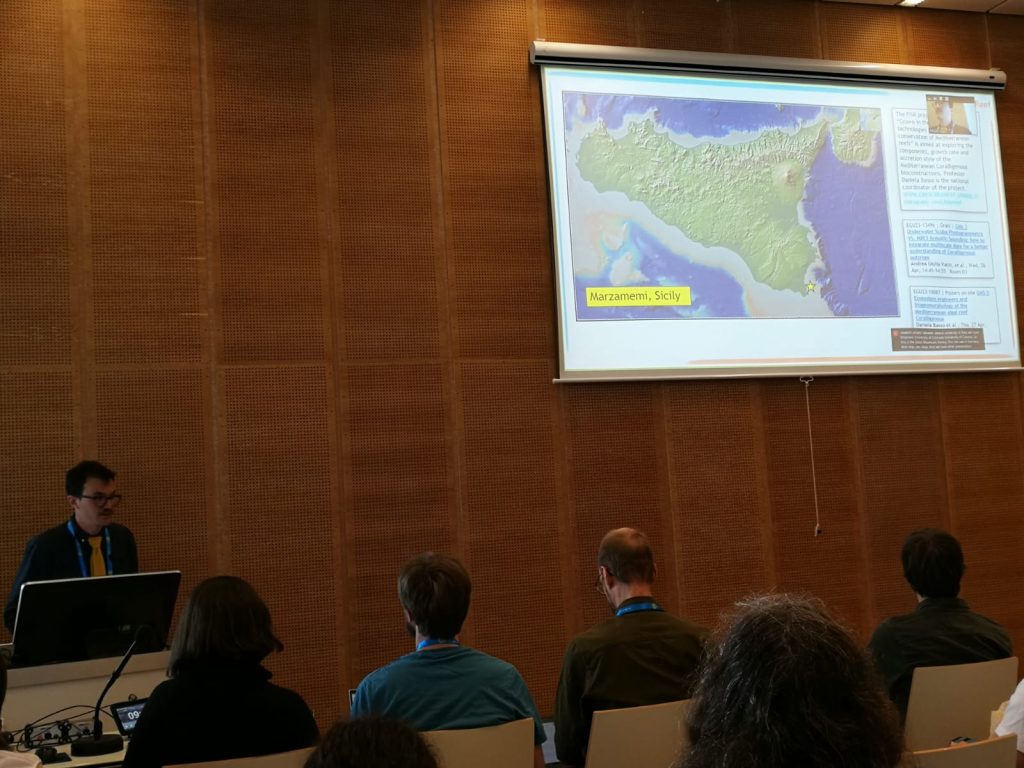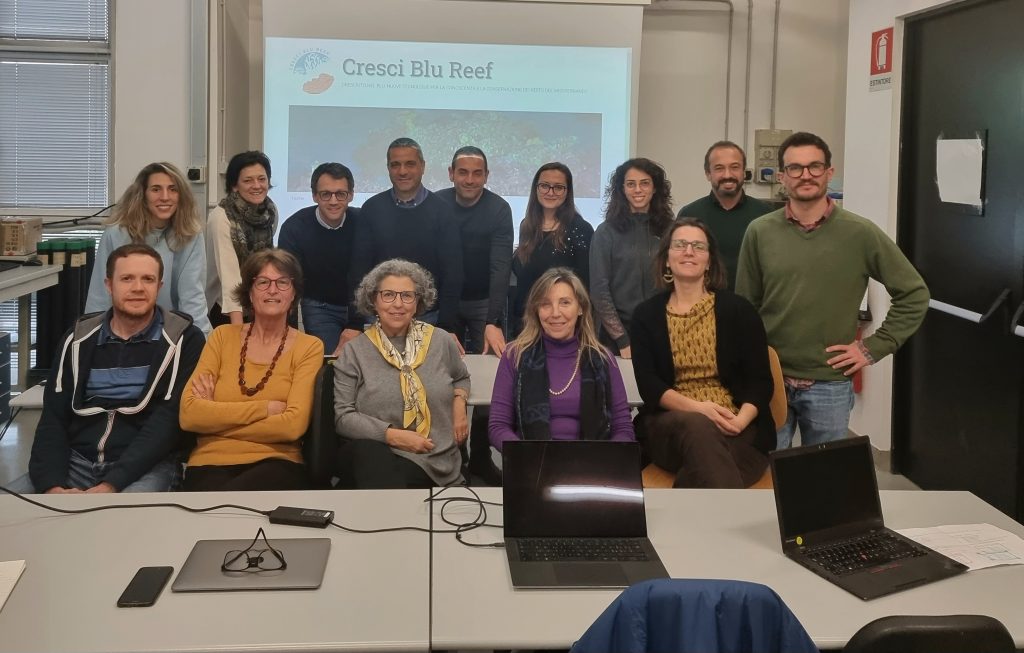ITALIAN BELOW:
ROMA _ 14-20 Luglio 2023
Dal 14 al 20 luglio si è svolto a Roma il 21° congresso INQUA (International Union for Quaternary Research).
Fieldtrip pre-congressuale
La Professoressa Basso, la dottoressa Bracchi e il dottor Bazzicaluppo hanno preso parte al fieldtrip pre-congressuale tenutosi alle Isole Egadi (Sicilia) denominato “Palaeogeographical evolution of the Egadi Islands (western Sicily, Italy): implications for late Pleistocene and early Holocene sea crossings by humans and other mammals”. Durante il fieldtrip, hanno visitato le tre isole maggiori dell’arcipelago e i numerosi siti geologici e archeologici presenti. Tra questi, con il direttore dell’AMP delle isole Egadi, il dottor Salvatore Livreri Console, ad esempio, la grotta del Tuono. Qui, la recente scoperta di Cervus elaphus e Patella caerulea come resti alimentari ha permesso di stimare che la navigazione del Mediterraneo risalga al Mesolitico. Oppure il Museo del mare di Marettimo, con il vicesindaco Vito Vaccaro, dove è stato possibile vedere le ossa dello stesso Cervus elaphus.
A Favignana hanno esplorato le antiche cave. Qui sono numerose le testimonianze di un passato in cui il paleoclima era più caldo dell’attuale con gli ospiti della fauna senegale come Tethystrombus latus (ex Strombus bubonius), e hanno osservato un tidal notch ben conservato con le relative perforazioni a opera di Lithophaga di età tirreniana. Infine, a Levanzo, hanno visitato la famosa grotta del Genovese. Un sito archeologico che conserva le tracce di vita dei nostri antenati di 13000 anni fa sotto forma di meravigliosi esempi di arte rupestre.
Congresso
Il congresso si è tenuto in una rovente Roma, tra il 14 e il 20 luglio 2023, e ha visto la partecipazione di migliaia di scienziati da tutto il mondo.
Il progetto CRESCIBLUREEF ha presentato le sue attività al proprio stand, dove è stato possibile raccontare ai presenti le attività svolte finora. Per qualche giorno è stato anche possibile osservar e il prototipo del carotiere montato sul ROV sviluppato dal gruppo di ingegneri dell’Università della Calabria. Tantissime persone si sono fermate attirate dal ROV e dai meravigliosi filmati che sono stati prodotti sul coralligeno di Marzamemi.
Sono state numerose inoltre le presentazioni orali e i poster. Inoltre, la professoressa Basso, è stata chair di una sessione che aveva come tema principale proprio le biocostruzioni atipiche come quella del coralligeno (Not only z-corals: Quaternary reefs across the latitudinal and depth gradients). Alla sessione hanno preso parte anche la Prof.sa Rossana Sanfilippo che ha parlato delle biocostruzioni del Mediterraneo, tra cui anche il coralligeno, la Dott.sa Gemma Donato ha esposto il ruolo dei serpulidi e briozoi nelle biocostruzioni del coralligeno e la stessa Professoressa Basso con una presentazione riguardo a un lavoro svolto a Lizard Island, Great Barrier Reef (Australia). Un’altra sessione è stata tenuta dalla Dott.sa Valentina A. Bracchi (Conservation paleobiology: late Neogene to Quaternary record sas a baseline for conservation of modern ecosystems) e anche qui sono stati presentati alcuni risultati relativi a CBR.
Ci vediamo alla prossima avventura!!
ENGLISH BELOW:
ROME _ 14-20 July 2023
The 21st INQUA (International Union for Quaternary Research) congress took place in Rome from 14 to 20 July.
Pre-congress fieldtrip
Professor Basso, Dr. Bracchi and Dr. Bazzicaluppo took part in the pre-congress fieldtrip held in the Egadi Islands (Sicily) called “Palaeogeographical evolution of the Egadi Islands (western Sicily, Italy): implications for late Pleistocene and early Holocene sea crossings by humans and other mammals”. During the fieldtrip, they have visited the three largest islands of the archipelago and the numerous geological and archaeological sites present. Among these, with the director of the AMP of the Egadi islands, Dr. Salvatore Livreri Consul, for example, the Tuono cave. There, the recent discovery of Cervus elaphus and Patella caerulea as food remains has allowed us to estimate that the navigation of the Mediterranean dates back to the Mesolithic. Or the Marettimo Sea Museum, with the deputy mayor Vito Vaccaro, where it was possible to see the bones of Cervus elaphus itself.
In Favignana they explored the ancient quarries. Here there are numerous testimonies of a past in which the paleoclimate was warmer than the current one with the hosts of the Senegalese fauna such as Tethystrombus latus (ex Strombus bubonius), and they observed a well-preserved tidal notch with the related perforations by Lithophaga of Tyrrhenian age. Finally, in Levanzo, they visited the famous Genovese cave. An archaeological site that preserves traces of the life of our ancestors from 13,000 years ago in the form of wonderful examples of rock art.
Congress
The congress was then held in a red-hot Rome, between 14 and 20 July 2023, and saw the participation of thousands of scientists from all over the world.
The CRESCIBLUREEF project presented its activities at its stand, where it was possible to tell those present about the activities carried out so far. For a few days it was also possible to observe the prototype of the core barrel mounted on the ROV developed by the group of engineers from the University of Calabria . Many people stopped attracted by the ROV and the wonderful films that were produced on the Marzamemi coral reef.
Also, there were numerous oral and poster presentations. Moreover, professor Basso was chair of a session whose main theme was precisely atypical bioconstructions such as that of coralligenous (Not only z-corals: Quaternary reefs across the latitudinal and depth gradients). During the session took part also Prof. Rossana Sanfilippo who spoke about the bioconstructions of the Mediterranean, including the coralligenous, Dr. Gemma Donato exposed the role of serpulids and bryozoans in the bioconstructions of the coralligenous and Professor Basso herself with a presentation on a work carried out at Lizard Island, Great Barrier Reef (Australia). Another session was held by Dr. Valentina A. Bracchi (Conservation paleobiology: late Neogene to Quaternary record sas a baseline for conservation of modern ecosystems) and also here some results related to CBR were presented.
See you on the next adventure!!
